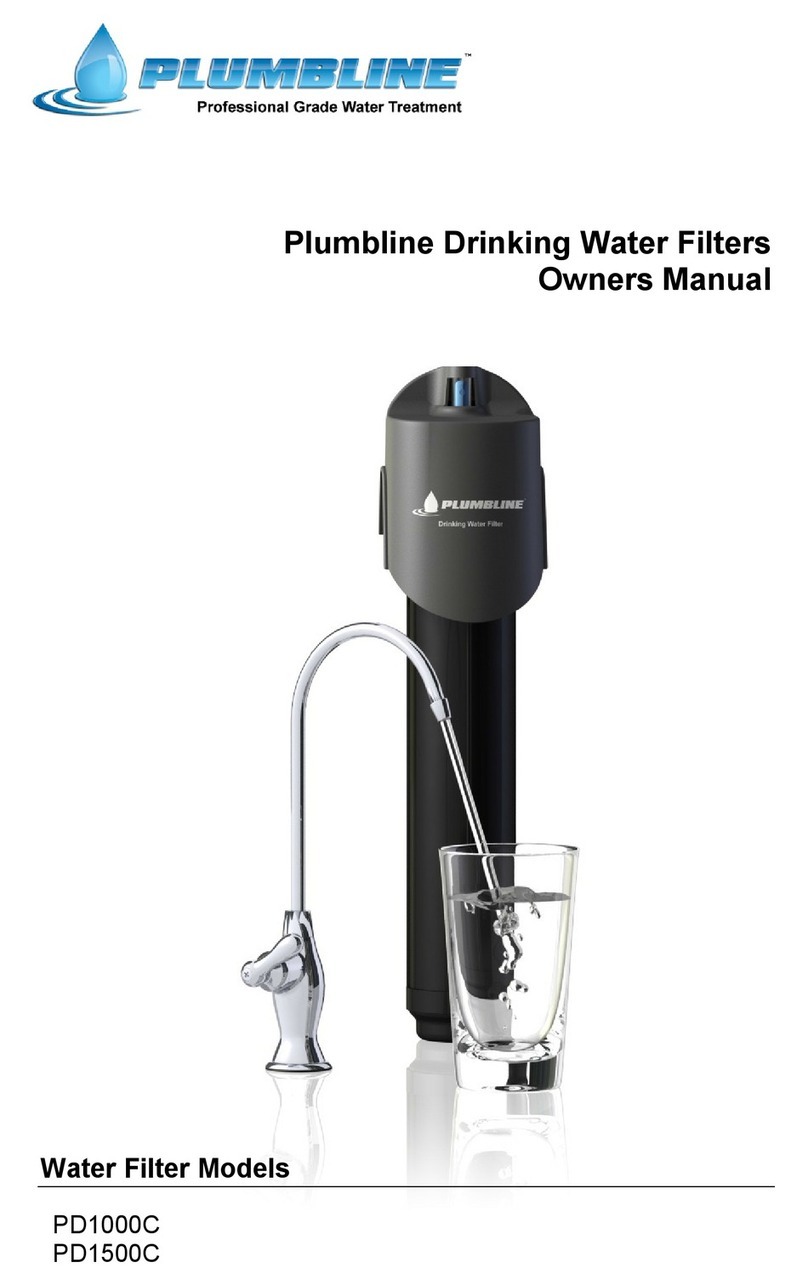Plumbline Water Softeners Owners Manual
Rev. 08/2013 Page 3 Product No. 13788C Page 3
How to use soft water
Now that your Plumbline water system is installed, you can enjoy all the benefits
of having soft water. If you are not accustomed to soft water, here are some tips
to follow to get the most benefit from your new system:
Use pure soap products.
Most leading brands of laundry soaps, household
cleaners and shampoos contain large amounts of
detergents. The harsh chemicals in these
detergents are necessary when using hard water,
but you can reduce your use or eliminate them
altogether with soft water. We recommend you use
pure soap products, clear liquid soaps without dyes
and perfumes. If you continue to use your normal
detergents, you should significantly reduce the
amount used. Your local Plumbline contractor can
provide you with more information and recommended detergent amounts.
Use less soap and household cleaners.
When using soap or cleaners with soft water, start by cutting the amount of soap
you normally use in half. You may even find you can use as little as one-quarter
the amount you were using before. Hardness minerals in water interfere with
soap’s cleaning ability. Once they are removed, soap can do its job better. Even
though you’ll use less soap, you’ll get more suds and cleaner results.
It’s especially important to reduce the amount of
laundry soap you use. Washing clothes in soft water
not only means you’ll need less soap to get your
clothes clean, but also that the soap you do use will
rinse out completely. Washing in soft water makes
your clothes look whiter and brighter, and they’ll last
longer too. It is very important not to let your clothes
sit in the washer after the cycle is complete.
Detergent buildup can stain your clothing. Again,
Plumbline recommends that you use clear, liquid
soaps, without dyes or perfumes.
After bathing in soft water, your skin should feel “slippery.” It’s not soap left on
your skin. What you’re feeling is your own smooth skin without any leftover soap
curd or residue. When you bathed in hard water, you were never able to rinse
this residue off completely. The soap curd that left a ring in your bathtub was also
left on your skin. But now that you have soft water, you’ll feel soft, smooth and
clean. The same holds true for rinsing shampoo out of your hair.
Reduce or eliminate the use of fabric softeners.
Fabrics washed in hard water retain soap curd or residue making them “crackle”
when removed from the dryer or stiff if air-dried. Fabric softeners are necessary
with hard water to keep your clothing soft, but with soft water, you can reduce
your use of fabric softeners or eliminate them altogether.




























